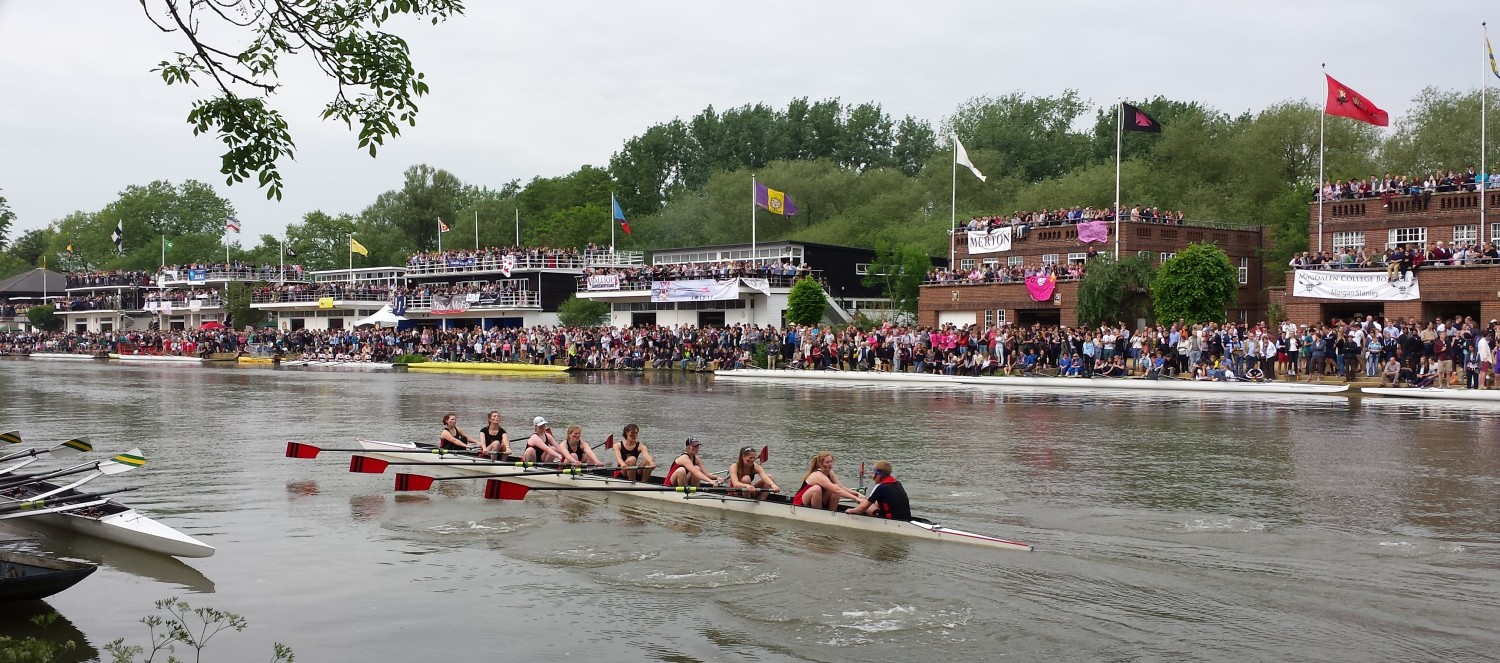The Crab Conundrum
By Howard Aiken
For many rowers in their first couple of competitive seasons, “catching a crab” is the biggest fear in the boat. After a while, as your most recent crab recedes into history and becomes a distant memory, rowers tend to stop worrying about it – until suddenly one day for no obvious reason, it strikes again. Crabs are rare among senior rowers, but not unknown. They happen during the Oxford / Cambridge boat race, at national championships and at Henley. So here’s the conondrum, why does this novice error occasionally strike even very experienced crews? And what should coaches do about it?
This video – big thanks to WA Rowing Club, Perth – shows an experienced crew catching a crab (crab at 1:42 NSFW – loud music):
[youtube https://www.youtube.com/watch?v=yn2R3g5foFM?rel=0]
There are actually two types of crab. The ‘common’ crab happens during the power phase of the stroke when the rower is unable to extract the blade from the water. The speed of the boat pushes the handle of the stuck blade into the rowers body. If they are lucky it simply knocks them flat and passes over their heads. If they are unlucky, the handle can lift the rower out of his or her shoes and eject them over the side of the boat. The other type of crab (as shown in the video) happens during the recovery when the blades are, or should be, in the air. If the leading edge of a blade catches the water at the wrong angle, the blade enters the water, the suddenly increased drag stops the forward motion of the spoon and again the movement of the boat brings the handle towards the bow, striking the rower’s body with the effect described above. From the coach’s point of view it is important to know which type of crab a rower has caught as the remedies differ.
The cause of the common crab is usually that the blade is not square in the water, either because the catch was not square or because the rower was feathering the blade underwater. Both of these novice errors can be fixed quickly and simply if timely action is taken by the coach. Unfortunately, a common response from novice rowers trying to avoid catching a crab is to pull their finishes lower into their laps in the belief that this will help get their blade out of the water. What this actually does is to lower their rigger toward the water at the extraction, giving them less space to ‘tap down’ into – so the problem of getting the blade out of the water actually gets worse. Pulling the finish higher, so raising the rigger and creating more room for the tap down is actually the more effective response.
A crab on the recovery is often caused either by over-feathering or (particularly with novices) by failure to keep the knees down during the first part of the recovery. If the knees come up early, the hands have to rise to get over them – and if the hands rise then the spoon has to drop toward the water. Again both these errors are relatively easy to fix by appropriate coaching if they are spotted in time.
Some coaches train crews to row their recoveries with blades very close to the water. Personally I’m not sure that this offers a real performance advantage, but it does increase the risk of a crab if the boat hits rough water or the wake of another boat. I coach crews to use the same hand height on the recovery whether they are using square or feathered blades. This gives the boat a margin of safety should the conditions require it.
For most rowers, catching a crab is not a predictable occurrence. It happens suddenly and unexpectedly and even the rower concerned my not be sure at which stage of the stroke the crab happened. Without video evidence, diagnosis and specific remedial coaching can be difficult. In these situations it is important not to exaggerate the problem in the rower’s mind. A rower who is concentrating on not catching a crab is probably not rowing at their best and the more the coach focuses on the crab the more pressure the rower is under. That pressure is more likely to lead to further errors and you risk creating a vicious circle. No-one catches a crab deliberately and I believe that the most common cause is a lapse of concentration – possibly elsewhere in the boat.
With senior crews I simply ignore the occasional crab. If it isn’t due to basic errors of technique then you do more good by sticking with the training plan for the outing rather than chasing what can be a very elusive error. Particularly in the run-up to a competition, good crew morale and the achievement of the right balance of attention and relaxation is more important.
It IS important always to check the rigging after a crab – particularly if it happened while the boat was moving fast. A crabbed blade can bend rigging out of shape. If the crew are sharing boats it is also worth checking that someone else hasn’t changed rigger heights, spans or blade pitches – again possibly on a different seat.
Provided that the problem isn’t in the equipment or the technique you have taught, I think catching a random crab remains one of rowing’s ‘black swan events’. Bad luck if it happens to you, good luck if it takes out the competition. As a coach, you just have to live with it.
